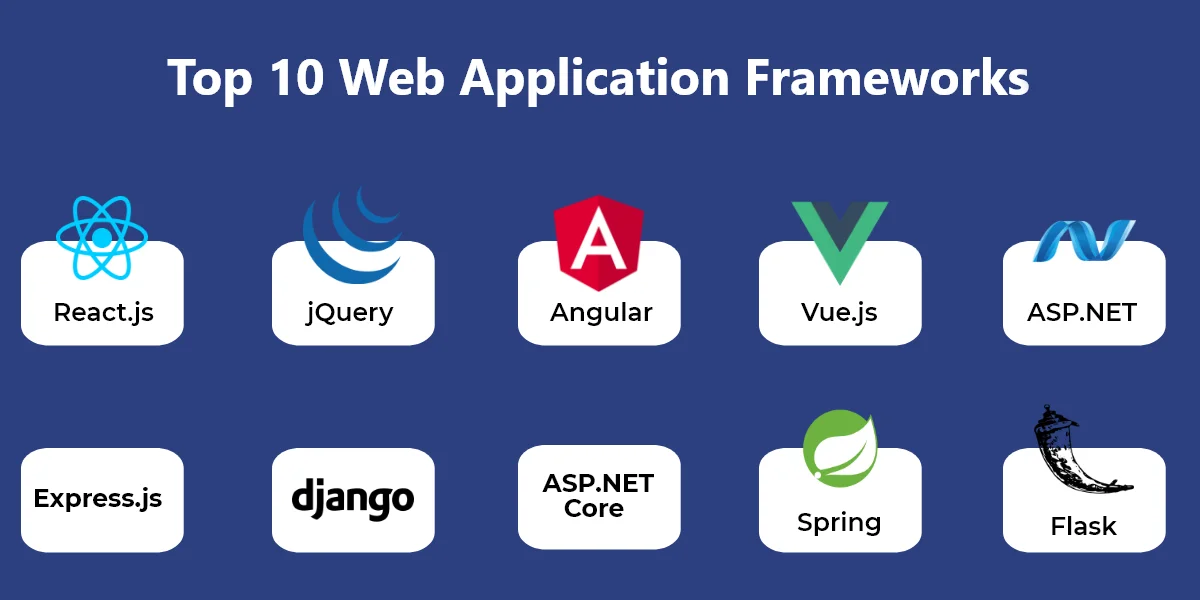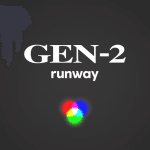In the ever-evolving landscape of web development, choosing the right framework is crucial for building efficient, scalable, and maintainable applications. As we step into 2025, several frameworks have emerged as leaders, each offering unique features and catering to different project requirements. This guide delves into the top 10 web development frameworks of 2025, highlighting their strengths, use cases, and considerations. web development frameworks
1. React
Overview: Developed by Facebook, React remains a dominant force in front-end development. Its component-based architecture and virtual DOM enable developers to build dynamic and responsive user interfaces efficiently.
Key Features:
Component-based architecture for reusable UI components.
Virtual DOM for optimized rendering performance.
Strong community support with a vast ecosystem of libraries and tools
Use Cases: Single-page applications (SPAs), dashboards, and complex user interfaces.
2. Angular
Overview: Maintained by Google, Angular is a comprehensive framework that provides a full-fledged solution for building large-scale applications. Its opinionated structure and TypeScript integration make it a preferred choice for enterprise-level projects.
Key Features:
Two-way data binding for real-time synchronization between model and view.
Dependency injection for modular and testable code.
Robust routing and form handling capabilities.
Use Cases: Enterprise applications, complex SPAs, and projects requiring scalability.
3. Vue.js
Overview: Vue.js is a progressive JavaScript framework known for its simplicity and flexibility. It allows developers to incrementally adopt features, making it suitable for both small and large applications.
Key Features:
Reactive data binding and a component-based architecture.
Lightweight with a gentle learning curve.
Comprehensive documentation and a supportive community.
Use Cases: SPAs, interactive web interfaces, and projects requiring gradual integration.
4. Svelte
Overview: Svelte introduces a novel approach by shifting the work to compile time, resulting in highly efficient and minimal runtime code. This leads to faster load times and improved performance.
Key Features:
Compiles components into optimized JavaScript at build time.
No virtual DOM, leading to faster rendering.
Simplified syntax and reduced boilerplate code
Use Cases: Performance-critical applications, real-time dashboards, and projects aiming for minimal bundle sizes
5. Next.js
Overview: Built on top of React, Next.js offers server-side rendering and static site generation, enhancing performance and SEO. It’s a go-to choice for developers seeking a full-stack framework.
Key Features:
Automatic code splitting and optimized performance.
API routes for building backend functionalities.
Incremental static regeneration for dynamic content
Use Cases: E-commerce sites, blogs, and applications requiring SEO optimization.
6. Nuxt.js
Overview: Nuxt.js extends Vue.js capabilities by providing server-side rendering and static site generation. It simplifies the development of universal applications.
Key Features:
Automatic routing and code splitting.
Modular architecture with a rich plugin ecosystem.
Support for static site generation and server-side rendering.
Use Cases: Content-heavy websites, SEO-focused applications, and Vue.js-based projects.
7. Django
Overview: Django is a high-level Python web framework that promotes rapid development and clean design. It comes with numerous built-in features, reducing the need for third-party tools.
Key Features:
Built-in admin interface, authentication, and ORM.
Emphasis on security and scalability.
Follows the “batteries-included” philosophy
Use Cases: Content management systems, scientific platforms, and applications requiring robust backend support
8. Ruby on Rails
Overview: Ruby on Rails emphasizes convention over configuration, allowing developers to write less code while accomplishing more. It’s known for its developer-friendly environment.
Key Features:
Scaffolding for rapid application development.
Active Record for database interactions.
Strong community and a plethora of gems (plugins)
Use Cases: Startups, MVPs, and applications requiring quick development cycles.
9. Laravel
Overview: Laravel is a PHP framework that offers an elegant syntax and a robust set of tools for web application development. It’s designed to make common tasks easier, such as routing, authentication, and caching.
Key Features:
Eloquent ORM for database management.
Blade templating engine for clean UI code.
Comprehensive documentation and a vibrant community
Use Cases: Web applications, APIs, and projects leveraging PHP.
10. Spring Boot
Overview: Spring Boot simplifies the development of Java-based applications by providing production-ready defaults and configurations. It’s widely used for building microservices and enterprise-level applications.
Key Features:
Auto-configuration and embedded servers.
Robust security and testing support.
Integration with various data sources and messaging systems
Use Cases: Enterprise applications, microservices architectures, and large-scale systems.
Comparative Table: Top 10 Frameworks in 2025
| Framework | Language | Frontend/Backend | Best for | Performance | Learning Curve | Community Support | Popularity |
|---|---|---|---|---|---|---|---|
| React | JavaScript | Frontend | Dynamic UIs, SPAs | ⭐⭐⭐⭐ | Medium | Excellent | Extremely high |
| Angular | TypeScript | Frontend | Enterprise-grade apps | ⭐⭐⭐⭐ | Steep | Very strong | Very high |
| Vue.js | JavaScript | Frontend | Flexible apps, gradual adoption | ⭐⭐⭐⭐⭐ | Easy-Medium | Very strong | Very high |
| Svelte | JavaScript | Frontend | Ultra-fast apps, minimal runtime | ⭐⭐⭐⭐⭐ | Easy | Growing fast | Growing |
| Next.js | JavaScript | Fullstack | SEO optimized apps, static sites | ⭐⭐⭐⭐ | Medium | Excellent | Extremely high |
| Nuxt.js | JavaScript | Fullstack | SEO-friendly Vue apps | ⭐⭐⭐⭐ | Medium | Strong | High |
| Django | Python | Backend | Rapid backend dev, secure apps | ⭐⭐⭐⭐ | Medium | Strong | High |
| Ruby on Rails | Ruby | Backend | MVPs, fast prototyping | ⭐⭐⭐ | Easy-Medium | Strong | Medium |
| Laravel | PHP | Backend | Modern PHP applications | ⭐⭐⭐⭐ | Medium | Excellent | Very high |
| Spring Boot | Java | Backend | Enterprise microservices | ⭐⭐⭐⭐ | Steep | Strong | High |
Conclusion
In 2025, the choice of the best framework heavily depends on your project needs, team expertise, and business goals:
If you need frontend performance and flexibility, Vue.js and Svelte shine the most.
For full-stack JavaScript applications, Next.js (React-based) and Nuxt.js (Vue-based) dominate.
For backend-heavy, security-first applications, Django, Spring Boot, and Laravel are strong candidates.
If you work in a corporate environment and need rigorous structure, Angular and Spring Boot are still the kings.
👉 React and Next.js are the leaders in terms of ecosystem, job opportunities, and long-term investment, but Svelte is growing as a major disruptor because of its blazing performance and simplicity. web development frameworks



